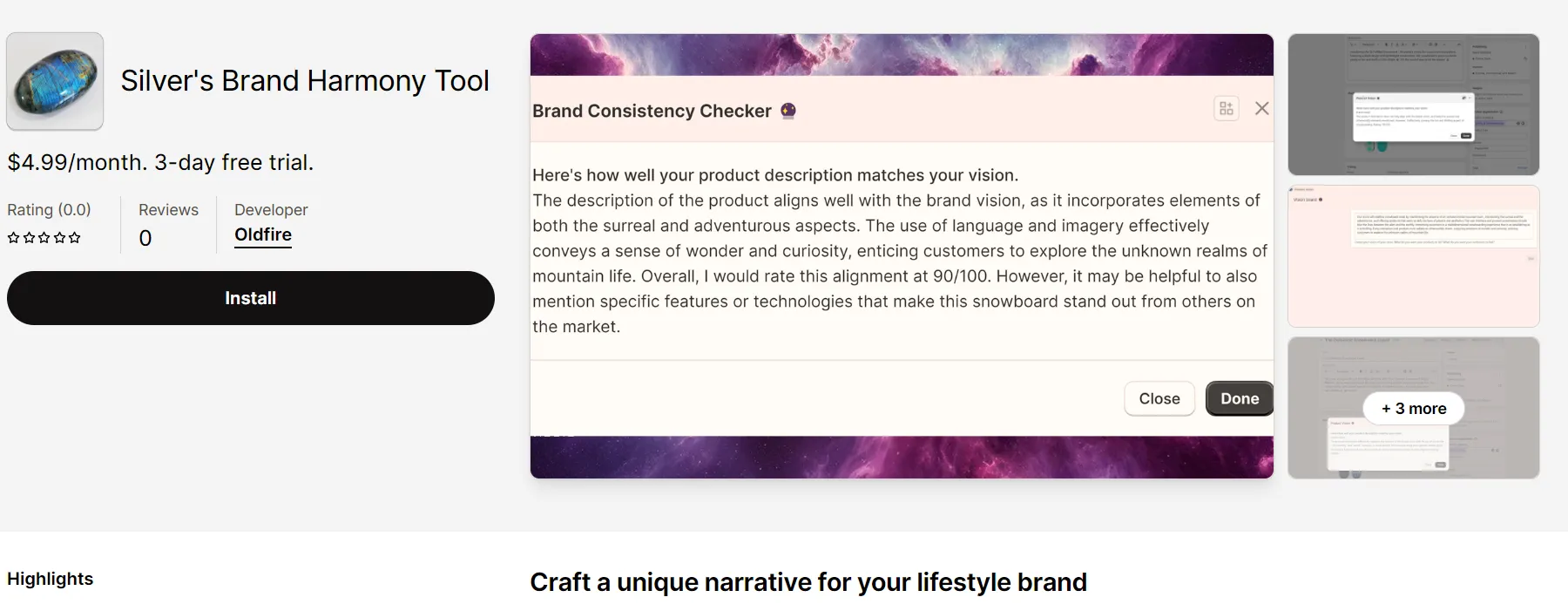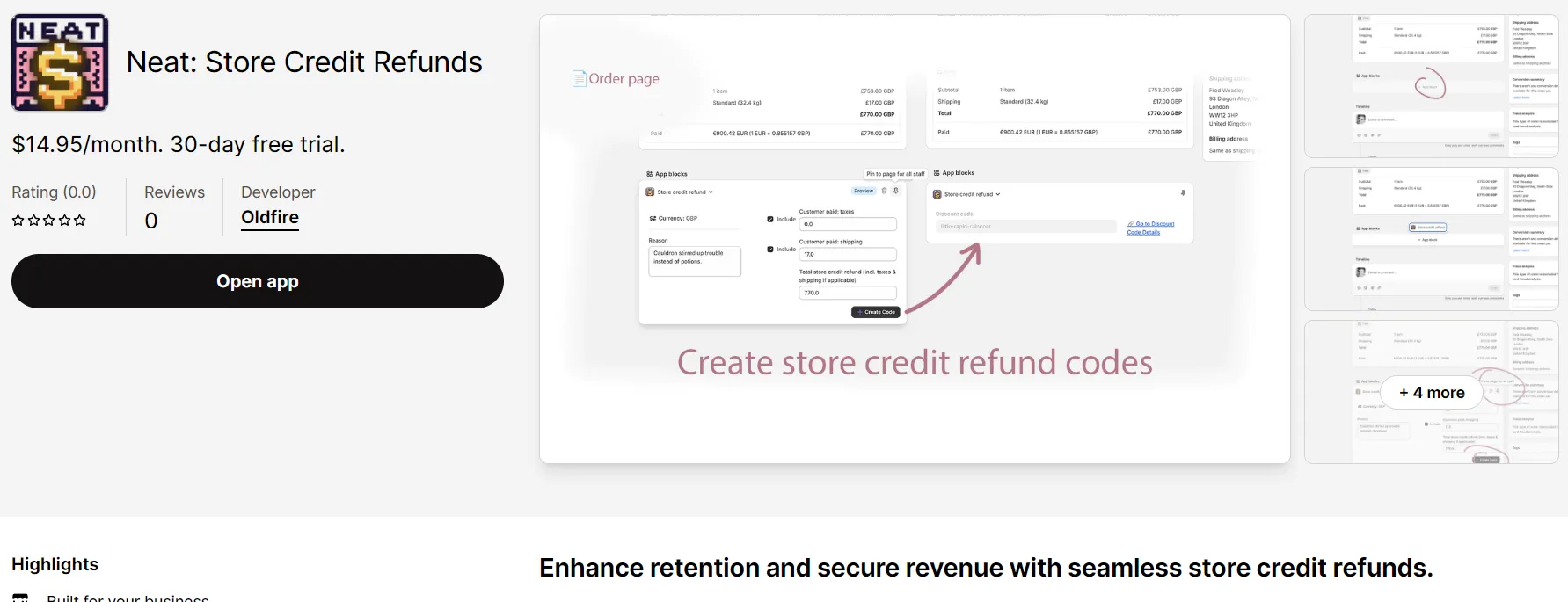Product-Market Fit Mismatches: App 2 Postmortem

Introduction
I am happy I have taken action. Action is always better than being paralyzed and overthinking everything. Experience solidifies learning differently. The wisdom gained is more powerful than the information gained from blogs, podcasts and books. This information starts out sitting in abstract cloud castles in your brain. So, I am not ashamed of my mistakes, even though they might seem trivial to a seasoned entrepreneur.
App 1: Product Vision Aligner
 Link: https://apps.shopify.com/product-vision-aligner
Link: https://apps.shopify.com/product-vision-aligner
So I’ve been attempting to follow the Walling’s Stair Step Method to entrepreneurship for a while now, as seen from my past posts. I started off with the first small app just to understand the ecosystem of building apps on Shopify. I think it did its job. It gave me eyes into the entire process and gave me courage to move forward. It also made it abundantly clear that it is not enough to build anything just useful for people to become interested in it. I knew it in the brain’s system 2, but then I also solidified it in system 1.
I made an attempt at trying to bring it into life by switching around the naming and keywords in order to rank better on long-tailed keywords. It had its effect, but the overall magnitude was too small.
App 2: Neat: Store Credit Refunds
 Link: https://apps.shopify.com/neat-credit
Link: https://apps.shopify.com/neat-credit
Market Analysis: Google Ads keyword planner
Next up, I took a serious attempt at building something people want. So I started out by checking the Google Ads Keyword Planner for ideas around the Shopify keyword. I wanted to make sure that whatever I am building, people are searching for. But because I needed to keep the learning cycles short, it had to be something smaller than the existing apps for the keyword I searched for.
I relied on the built-in feature of categorizing these keywords into meaningful keyword groups that helped narrow down my search quite a lot.
Market Analysis: Shopify app marketplace
I made a list of these keywords, did lots of searches with these keywords in the Shopify app marketplace and identified the best ones where there weren’t many incumbents, but still demand. I read through the reviews, and immediately noticed how much praise there was for each of these apps. All the apps stand at about 4.9 to 5.0 stars out of 5.0.
So I asked for help from a community of entrepreneurs and got an amazing insight to try identifying the main reason people install the app. This is because many large apps have a core reason that they exist, and then a lot of extra functionality loaded on top over time (that does not matter as much). This is where I made the mistake. I identified one of the most mentioned feature in the reviews, but it was not the reason they actually installed the app. By the way, much later I realize I should not have been niching the functionality, but instead niching the market - this is critical. (Technically niching is not a word, but let me know if you know a good replacement!)
Building and launching the app
Having not understood the depths of this mistake, and figuring this is something I would use myself as a merchant, I went out to build this app. I, of all people, know planning fallacy very well, but instead of the couple of weeks I thought it would take me, it took me 6 weeks to build instead. Not that the app itself was so complex, but building on Shopify is way more complex than it initially looks. I think I’ve learned so much by now on a technical level that I think I can cut this time in half. I am proud I got this done, and I think it works very well.
I set a price on the app for which, under that price, I cannot see someone rationally not buying it because it saves a couple of dollars - $14.95. Plus, on installing the app, they should almost immediately see massive returns on invested capital. It might even be too low, but Shopify apps tend to be extremely cheap, so I ignored that thought for now.
Marketing the app
Once I got this launched, I finally understood that apps don’t rank in Shopify organically. It wasn’t about the app and its desirability at the get go. It was about the fact that Shopify needs signals like reviews, installs, long-term API communication quality signals, long-term security signals etc. for it to rank well. So every new app is DOA unless it has a kick-starter bundled. Even though I love Rob Walling who inspired me greatly to do all of this, his advice around this is pretty aged as the (step 1) app platform is not a marketing channel that is solved (such that I could focus on everything else).
Ah, whatever. Let’s kick-start it then.
I made a marketing campaign on Google pay-per-click ads with some keywords that I had identified. I optimized these over the course of a few days and I think I got a pretty accurate understanding of what good keywords were for this. The keywords did only focus on the functionality itself, and I did not play the game of using competitor keywords, my brand name for brand building etc., because that is more of a long game. For €121.21 I got 371 impressions at a 14.56% CTR and an average of €2.24 CPC with 54 clicks total with 0 conversions. That means if the next click was a successful conversion, that would be lower than a 2% conversion rate. It would also mean that the customer acquisition cost (CAC) would be more than €122. At an effective standard of CAC to LTV of 1:3, the LTV would have to be €366, which at a €15 MMR per customer would have to have a happy customer for longer than 2 years. The math isn’t working out, even though at 54 clicks it isn’t entirely statistically significant. And for this reason, I am keeping some long-tailed keywords enabled for slightly longer.
Of course, I also attempted to market the app with Shopify’s internal ads as well, but the keyword bidding costs seemed just so high that it was unreasonable. I received a few impressions, but way fewer than from Google Ads. I also tried out the new Category Ads, got one click, and paid €5 for it. I read an interesting article recently suggesting Shopify ads could rather be used initially for customer awareness and impressions instead of expecting or even wanting them to click on them, as after all, most customers do not convert on the first visit. I quite like this approach of using this for impressions and will do that next time. For now, I wouldn’t be expecting any conversions from these ads and am happy with it.
Am I wiser now? What’s next?
I am happy adding layers and layers on top of my process each time I fail, as long as I am given the opportunity to try.
Here’s the simplified processes I have been using so far and what I am planning to do next.
First app:
1. cool LLM idea
2. implementation
3. (no market)Second app:
1. keyword research
2. review research
3. formalize an idea
4. design
5. implementation
6. (no market)Third app:
1. pick a truly niche market
2. find watering holes
3. talk to merchants
4. learn & find apps they use
5. review research
6. keyword research
7. formalize an idea
8. design
9. talk to merchants again (if failed, go to step 5 or 1)
10. implementation
11. market???These updates to the process I am following have been improved with the great help of the MicroConf community.
![]()
I am a pretty extroverted person, and I enjoy talking to people. But a few years ago when I tried talking to customers before building something, I got burned in multiple ways. There was a lot of ignoring, some meanness, and a lot of “don’t care, don’t want”. I should expect this, but it hurts the same. Most of it was physical meetups, which were often nice, but the online interactions were daunting. So I have a bit of an irrational fear about that right now as well. I don’t want to put all my energy into this, expecting this to be of a somewhat deterministic process, and end up with bad information that does not leave me anywhere. In the end, though, all I am actually doing is trying to make my merchants rich. So hopefully that’s fine this time, but if it’s not, and it happens with different niche markets, then I’ll ask for help.
In terms of the new process, the hope is that I will actually learn something additional to what apps the merchants use. Something that actually says what problems they are having. But if I only find out just the apps that they use, that is also better than nothing. Once I have a vision of something they might need, I still have a list of people to contact, because they have talked to me before and should be relatively responsive.
Let’s see how things turn out!